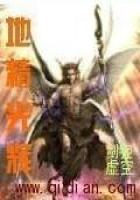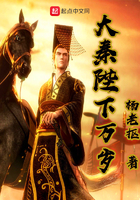第二类读物主要是科普知识类,包括发明创造、科学探险以及与我们日常生活密切相关的话题。
1.Some Strange Journeys
坐地日行八万里
Jules Verne was a Frenchman who was born in 1828. He was not an inventor and he was not a scientist,but he read a great many scientific books。He had a very strong imagination and he loved adventure although he did not have many great adventures himself。He wrote a number of exciting books about things which he thought that scientists and inventors would one day be able to do。Years later,many of the things he wrote about really happened。At the time,however,his stories seemed like fairy stories!
Jules Verne's first successful book was called“Five Weeks in a Balloon”。 In this story four men traveled in a balloon over the continent of Africa。At that time no one knew much about Africa and Verne imagined what they might have seen from the balloon——mountains,rivers,forests,deserts,wild animals and strange men。
This book was such a success that Verne began to write another called“A Journey to the Center of the Earth”。 He had been to Iceland and seen a volcano there。A volcano is rather like a mountain with a hole down its center。Hot lava sometimes comes up through this hole。In the story,three adventurers go down through a hole in a volcano,deep down to the center of the earth。We now know that this is impossible because the inside of the earth is very,very hot but at the time scientists did not know this。
Many of Jules Verne's attempts to look into the future,however,were surprisingly accurate。 For example,his next book was called“From Earth to the Moon”。In this,three men and a dog made a journey around the moon。They did this in a hollow“ship”fired from a gun。After going around the moon,they returned to earth and splashed down into the sea not far from where the first real moon travelers landed in July 1969,about a hundred years later!
Jules Verne's most famous book is“Twenty Thousand Leagues Under the Sea”。(A“league”is anold word meaning about three miles。)In those days submarines had not been invented but he describes an underwater ship very like a modern submarine。 The captain of the submarine in this book is called Captain Nemo(which means“no man”)and he and his crew have many strange adventures and find many strange things at the bottom of the ocean。
In all his books Jules Verne used his scientific knowledge as well as his imagination in describing future inventions。 Sometimes he was wrong,of course,but often the accuracy of his descriptions is very clever。
He was a very good story-teller。 His characters often did surprising and sometimes impossible things but they always seemed to be real people。Sometimes they are very likable and amusing characters。Two of these were Mr。Fogg,the hero of“Around the World in Eighty Days”,and his servant。In this book Mr。Fogg made a bet that he would travel all the way around the world in eighty days。This may seem easy to you。Nowadays we can go around the world in less than eighty hours but in those days there were no airplanes or even cars。Mr。Fogg and his servant traveled in many different ways,even on an elephant at one time!If you want to know whether Mr。Fogg won his bet,you should read the book。It has been written in simple English。
Jules Verne died in 1905 when he was 77. Many years later explorers really did go to the moon and one part of the moon was given Jules Verne's name。
提示:科学幻想作品的生命力就是贴近现实生活的想象,其魅力莫过于作者的预见能力。有谁见到过比Verne更料事如神的科幻作家吗?
2.The Post Office
家书抵万金,难忘绿衣人
We know that in early times messengers carried letters from place to place。 In Europe,however,it was not until the fifteenth century that a regular system of taking letters between towns was started。The messengers traveled on horseback,and fresh horses were kept ready at different places along the main roads where the messengers stopped。Each of these stopping places was known as a post and today we still keep the name“post office”。
In the old days,such postal deliveries were only for important people。 The messengers would sometimes carry letters for ordinary citizens,but the changes for doing this were very high and the messengers were often careless。People began to ask for an easier and cheaper way of sending their letters and so,in the seventeenth century in Britain,a service was started for everyone。At first this postal service carried letters only between a few very busy towns,but year by year it grew larger and better。
More countries began to provide postal services for everyone。 Today every country has its post office,and these services play an important part in the life of us all。If there were no post offices,we would find it difficult to keep in touch with our friends at a distance。Shopkeepers and other businessmen would find it very expensive to order and to receive goods。
The chief post office of a country is usually in the capital city and it has branches in towns and even in small village。 The post offices of the world help each other so that letters can be sent to and from every land。Letters can now be sent by post for delivery in almost any village anywhere。
Letters were once taken throughout the whole of their journey,by messengers,but such arrangements were changed long ago。 In Britain the post man now delivers the mail from the nearest post office。When he has only a short distance to go,the postman may walk or ride a bicycle。
In some countries the postman rides a horse or a camel。 In parts of Canada and Russia the postman needs a sledge drawn by dogs,for at certain times of the year,snow lies deep on the ground and this is his best means of traveling。In some countries he has to reach a number of villages along the banks of rivers and the easiest way is to go by boat to avoid the thick jungle。
The post office also uses many other ways to carry mail between post offices:by van and lorry,by train and ship,and by airplane,whichever is the quickest and easiest。
提示:在电信业十分发达的今天,可以只打电话不发电报,但是没有人不使用邮政服务。关于邮政,你所了解的是否比本文讲的更多?读完全文后,你是否能用英语把它的功能复述出来?
3.The Solar System九霄云外有重天
The Earth is a planet just under 8,000 miles in diameter,moving round the Sun at a distance of 93,000,000 miles,and completing one circuit in 365 and 1/4 days。 It is not the only Planet;eight others are known,all with their own special points of interest。Mercury and Venus are closer to the Sun than we are;Mars,Jupiter,Saturn,Uranus,Neptune,and Pluto are farther away。Of course,the nearest to us are Mars,which may approach the Earth to within 35,000,000 miles,and Venus,which has a minimum distance from us of only about 24,000,000 miles。
Mars and Venus are also the only two planets which do not appear to be overwhelmingly hostile。 However,they are much more remote than our one natural satellite,the Moon,which moves round the Earth at a mean distance of less than a quarter of a million miles。
The Sun itself is a star。 It is by no means distinguished,and modern astronomers class it as a“Yellow Dwarf;”it seems splendid to us only because it is relatively so near。We know of stars which are at least a million times more luminous than the Sun,and yet are so far away that telescopes are needed to see them at all。The stars visible at night-time are immensely distant,which is why they appear only as tiny points of light。Many of them may well have planet-systems of their own。All the same,we must not be contemptuous of the Sun。It may not be a celestial searchlight,but neither is it a glow-worm:it is normal in every way,and cosmically it is far more important than our own insignificant world。Its diameter is 864,000 miles so that it could contain more than a million globes the size of the Earth;even at its surface,the temperature is around 6,000 degrees centigrade(11,000 degrees Fahrenheit),and in the solar“power-house,”deep inside,the temperature must rise to well over ten million degrees。
The Sun is gaseous,and is not burning in the ordinary sense of the word,since it produces its energy by means of thermonuclear processes near its core。 The essential difference between a star and a planet is that a star is a sun in its own right,whereas a planet shines only because it reflects the rays of our own particular Sun。If we could observe from the surface of another world——Mars,for instance——the Earth too would appear in the guise of a star-like object,and a telescope would be needed to show even large features such as the Pacific Ocean and the Eurasian landmass。
提示:我们小时候都学过关于太阳系的知识,你是否还记得文中提到的有关距离、速度、温度等的数字?centigrade和Fahrenheit两个词猜也猜得出来。你能把太阳系的九大行星用英语背诵出来吗?有一个秘诀:只要你记住这样一句毫无意义的话,My very elderly mother just sat under North Pole,按这句话中每个单词的第一个字母,就可以把Mercury,Venus,Earth,Mars,Jupiter,Saturn,Uranus,Neptune,Pluto这九大行星记住。当然它们的汉语顺序更容易记住,分三组,九个字:水金地、火木土、天海冥。
4.Public Goods
我为人人,人人为我
Public goods are those commodities from whose enjoyment nobody can be effectively excluded。 Everybody is free to enjoy the benefits of these commodities,and one person's utilization does not reduce the possibilities of anybody else's enjoying the same good。
Examples of public goods are not as rare as one might expect。 A flood control dam is a public good。Once the dam is built,all persons living in the area will benefit——irrespective of their own contribution to the construction cost of the dam。The same holds true for highway signs or aids to navigation。Once a lighthouse is built,no ship of any nationality can be effectively excluded from the utilization of the lighthouse for navigational purposes。National defense is another example。Even a person who voted against military expenditures or did not pay any taxes will benefit from the protection afforded。
It is no easy task to determine the social costs and social benefits associated with a public good。 There is no practicable way of charging drivers for looking at highway signs,sailors for watching a lighthouse,and citizens for the security provided to them through national defense。Because the market does not provide the necessary signals,economic analysis has to be substituted for the impersonal judgment of the marketplace。
提示:关于public goods是什么,文中讲得很清楚了:大可以大到巨型公用设施,小可以小到一个公益广告或者微型路标。它们可以是与我们生活联系非常紧密的东西,也可以是我们生活中不常看到或者从来也意识不到的东西。它们还包括另一类东西,即生活中大家可以share的东西。不同文化里这些东西有所不同。例如,一盒火柴虽然需要用钱买,但是人们互相借火柴时并没有比借用别人其他东西时客气,恰如在餐桌上请别人把盐巴递过来一样随便。俄罗斯男人(有时候他们互相根本不认识)之间的“给我一支烟抽”连一个“请”字都不用。也许香烟在他们眼里算是public goods吧。
5.Satellite City
现代地道战
The term“satellite city”is used to describe the relationship between a large city and neighboring smaller cities and towns that are economically dependent upon it。 Satellite cities may be collection and distribution points in the commercial linkages of a trading metropolis,or they may be manufacturing or mining centers existing with one-industry economies as the creatures of some nearby center。This latter form is what is generally meant when one uses the term“satellite city。”Taken in this sense,nineteenth-century Chicopee and Lowell,Massachusetts,were satellites of Boston。Both were mill towns created by Boston investors to serve the economy of that New England metropolis。Located on cheap land along water-power sites in the midst of a farming region that could supply ample labor,they were satellites in the fullest sense of the term。Pullman,Illinois,and Gary,Indiana,were likewise one-industry towns created in conjunction with the much broader economy of nearby Chicago。Such places,as Vera Schlakman and Stanley Buder have pointed out in their excellent urban biographies,had a one-dimensional quality,a paucity of social vigor。These cities could not stand alone;they were in a sense colonies of a multi-functional mother city。
6.Charles Darwin
伟大而闻名——达尔文
Darwin's great work,The Origin of Species,is now generally accepted as one of the most important books ever written。 But when it first came out in 1859,it was both denied and bitterly condemned by scientists and laymen。
Much of the opposition to The Origin of Species arose from Darwin's claim that all living creatures,including man,are somehow related。 Many people were outraged by the suggestion that man shared a common ancestor with animals such as apes and monkeys。They attacked Darwin for saying that man has descended from the apes。
But Darwin never actually said this。 He believed that modern men and modern apes have both descended from the same ancestor。But at some time in prehistory,millions of years ago,men and apes began to develop separately,and ever since have continued to take on different characteristics。Today,more than 90 years after Darwin's death,this is the opinion which scientists continue to hold。
In his works,Darwin described the progression of life from its earliest forms。 First came the invertebrates——creatures without a backbone。Then invertebrates evolved into fish,fish into amphibians,amphibians into reptiles,and reptiles into birds and mammals。
Fossil remains found after his death show that Darwin was right。 Perhaps the most amazing fact about his theory is that he managed to with it out with the aid of only a few fossil discoveries。Fossil remains were not the only information which we now possess but which Darwin lacked。He did not know that apes have the same diseases as men,nor that they and men have the same kind of blood。Nor did he know about the modern uses of radiation which enable scientists to tell the age of fossil remains and so estimate the speed at which evolution has taken place。
Lacking all this information,Darwin had to rely on other branches of science。 One of them was comparative anatomy——the science which compares the physical make-up of different species。He observed that all vertebrates——amphibians,reptiles,birds and mammals——possess forelimbs which are basically the same。The limbs may be used for swimming,flying,or walking,but they are all built on the same plan。They contain one bone in the upper arm,two bones in the forearm,several bones in the wrist,and five bones in the hand with finger joints attached。
Darwin marveled at this similarity between such widely differing species。“What can be more curious,”he asked,“than that the hand of a man formed for grasping,that of a mole for digging,the leg of a horse,the paddle of a porpoise,and the wings of a bat,should all be constructed on the same pattern?”From this extraordinary fact,he drew the correct conclusion:that different species share the same characteristics because they are descended from the same ancestors。 Then,later,they took on the separate characteristics which helped them most in the struggle to survive in their own local environments。
提示:英国博物学家达尔文是进化论的奠基人,他发现了有机界规律的理论,对人类许多学科都有重大的影响。伟大的思想家马克思曾拟把英文版的《资本论》献给他;恩格斯在《在马克思墓前的讲话》中又把马克思发现人类社会发展规律的贡献与达尔文在有机界的贡献相提并论,足见达尔文的伟大。The Origin of Species:《物种起源》。
7.Energy
世界是物质的,物质是运动的,运动是……
All the useful energy at the surface of the earth comes from the activity of the sun。 The sun heats and feeds mankind。Each year it provides men with two hundred million tons of grain and nearly ten million tons or wood。
Coal,oil,natural gas,and all other fuels are stored-energy from the sun。 Some was collected by this season's plants are carbon compounds。Some was stored by plants and trees ages ago。
Even waterpower derives from the sun。 Water turned into vapor by the sun falls as rain。It courses down the mountains and is converted to electric power。
Light transmits only the energy that comes from the sun's outer layers,and much of this energy that is directed toward the earth never arrives。 About nine-tenths of it is absorbed by the atmosphere of the earth。In fact,the earth itself gets only one half-billionth of the sun's entire output of radiant energy。
8.The Discoverer of X-rays
火眼金睛
If you break your arm or leg,the doctor will probably send you to hospital to have an X-ray photograph taken to find out just where the break is and what kind of break it is。 If a small child swallows a coin or some other hard thing,as sometimes happens,the doctor will take an X-ray photograph to find out just where the object has got to in the child's body。Every hospital has an X-ray department,and doctors now depend on these photographs for giving them information about their patients。Dentists also take X-ray photographs of people's teeth to find out if there is anything wrong with the teeth which does not show from the outside。X-rays were first discovered by a German scientist,Wilhelm Konrad Rontgen,in 1895,almost by accident。
He and several other scientists were experimenting with passing electric currents through certain gases in a special glass tube from which the air had been removed。 Then one day Rontgen noticed that,even when the tube was covered with black paper,some strange kind of radiation was coming through and making a screen nearby glow。Rontgen could not see anything coming out of the tube,but then he discovered that if he put the screen in the next room on the other side of a closed door,the rays still seemed to affect it。The glowing screen showed that the rays could not only pass through black paper but also wood。
The next thing he found out was that if he put his hand between the rays and a photographic plate,the rays would print a shadow of the bony framework of his hand on the plate。 In fact the rays could pass as easily through the fleshy part of his hand as through the black paper,but hardly at all through the bone。So Rontgen made the first X-ray picture of a hand,showing just how the bones in the hand fit together。
When Rontgen wrote an account of what he had discovered,he called these new rays X-rays,for X is a symbol often used for something which is not yet understood。 Other scientists called them Rontgen rays in honor of the man who first found them,but X-ray is the name now always used。
Rontgen went on to try to find out more about these strange invisible rays。 It appeared that they travel in a straight line,as light rays travel,but that they are not bent,as light is,when passing through glass or water。He gradually came to realize that X-rays,like light waves,are electromagnetic radiations,but that their wave-lengths are extremely short。This is why they can pass through materials solid enough to stop ordinary light,and why they are invisible to our eyes。We now know that X-ray waves are 2,000 to 10,000 times shorter than light waves,and that the shorter they are the more easily they will passthrough solid materials。Scientists have now discovered rays with even shorter wavelengths,which they call gamma rays,and which can pass through even more solid substances than X-rays can。
As well as being X-rays are also used for treating diseased parts of the body to kill the disease。 So today doctors can find out by X-rays whether a patient has tuberculosis,for example,or cancer,in time to be able to cure it,and then they use the X-rays to destroy the cancer。This is why people are encouraged to have X-rays taken in the mass radiography units which go to schools and factories and such places。X-rays are also used for studying many other things as well as human bodies。Engineers use them,for example,to find out how metals are made up,to check whether they will be strong enough for their purpose and whether there are any flaws in them。
提示:德国科学家伦琴(Rontgen)发现X射线,对现代科学尤其是医学的贡献之大是不言而喻的。
9.The Beginning of Money
是是非非孔方兄
In the earliest stages of man's development he had no more need of money than animals have。 He was content with very simple forms of shelter,made his own rough tools and weapons and could provide food and clothing for himself and his family from natural materials around him。As he became more civilized,however,he began to want better shelter,more efficient tools and weapons,and more comfortable and more lasting clothing than could be provided by his own neighborhood or by the work of his own unskilled hands。For these things be had to turn to the skilled people such as smiths,leather workers or carpenters who were springing up everywhere。It was then that the question of payment arose。
At first he got what he wanted by a simple process of exchange。 The smith who had not the time to look after land or cattle was glad to take meat or grain from the farmer in exchange for an axe or a plough。But as more and more goods which had no fixed exchange value came on the market,exchange became too complicated to be satisfactory。Another problem arose when those who made things wanted to get stocks of wood or leather,or iron,but had nothing to offer in exchange until their finished goods were ready。
Thus the difficulties of exchange gradually led to the invention of money。 In some countries,easily handled things like seeds or shells were given a certain value and the farmer。Instead of paying the smith for a new axe by giving him some meat or grain,gave him so many shells。If the smith had any shells left when he had bought his food,he could get stocks of the raw materials of his trade。In some countries quite large things such as cows or camels or even big flat stones were used for trade。Later,pieces of metal,bearing values according to the rarity of the metal and the size of the pieces,or coins were used。Money as we know it arrived。
10.Great Inventions
上九天揽月,下五洋捉鳖
There have been many great inventions,things that changed the way we live。 The first great invention was one that is still very important today the wheel。This made it easier to carry heavy things and to travel long distances。
For hundreds of years after that there were few inventions that had as much effect as the wheel。 Then in the early 1800's the world started to change。There was little unknown land left in the world。People didn't have to explore much anymore。They began to work instead to make life better。
In the second half of the 19th century many great inventions were made。 Among them were the camera,the electric light and the radio。These all became a big part of our life today。
The first part of the 20th century saw more great inventions。 The helicopter in 1909.Sound movies in 1926.The computer in 1928.And jet planes in 1930.This was also a time when a new material was first made。Nylon came out in 1935.It changed the kind of clothes people wear。
The middle part of the 20th century brought new ways to help people get over diseases。 They worked very well。They made people healthier and let them live long lives。By the 1960's most people could expect to live to be at least 60.
By this time most people had a very good life。 Of course new inventions continued to be made。But man now had a desire to explore again。The world is known to man but the stars are not yet。Man began looking for ways to go into space。Russia made the first step。Then the United States took a step。Since then other countries,including China and Japan,have made their steps into space。
In 1969 man took his biggest step away from earth。 Americans first walked on the moon。This is certainly just a beginning though。New inventions will someday allow us to do things we have never yet dreamed of。
11.The Telephone and Its Inventor
后天下之乐而乐
In the nineteenth century,the invention of the telegraph made it possible to send noises,signals,and even music over wires from one place to another。 However,the human voice had never traveled this way。Many inventors tried to find a way to send a voice over wires,and in 1876 some of their efforts were crowned with success。Two American inventors,Alexander Graham Bell and Elisha Gray,succeeded at almost the same time。The United States Supreme Court finally had to decide which of the two was the first inventor of the telephone。The Court decided in Bell's favor。
Born in Edinburgh,Scotland,Bell grew up in a family that was very interested in teaching people to speak。 His grandfather had been an actor who left the theater to teach elocution;his father was a teacher who helped deaf-mutes learn how to speak。
After studying in Edinburgh and London,Bell moved to Canada with his family。 Bell was frail and,since two of his brothers had died of'tuberculosis,his family felt that the climate of Canada would be less damp and more healthy for Alexander。
In 1871,the year after the Bells'arrival in Canada,young Alexander found a job in the United States。 He was hired as a teacher in a new school for the deaf in Boston,Massachusetts。He taught there and at other United States schools。Eventually,he opened a school of his own。One of his pupils later became his wife。
Bell thought that if he could make speech visible by actually showing the vibrations of the voice,he could teach his deaf pupils to make the same vibrations themselves。 Bell tried to find a way to reproduce the vibrations by electrical means。He was led to believe that if a wire could carry vibrations;there was no reason why it could not carry the words spoken by a person。After all,he reasoned,spoken words are only a series of different vibrations。
Bell spent his evenings experimenting with tuning forks(fork-shaped pieces of metal which alwaysproduce the same musical note and which are used to tune pianos),metal springs,and magneto batteries。 His assistant,named Watson,worked with him for almost four years。They spent all their spare time,as well as their spare money,on their experiments。When their money ran out,they persuaded some businessmen to help them financially。
Finally,one day in 1874,Bell was at his receiver in one room,trying to catch the signals sent by Watson from another room。 Suddenly he heard a faint twang。Rushing into Watson's room,Bell shouted,“what did you do then?”he found that the sound had been made accidentally when two pieces of metal had stuck together and closed the circuit。Watson had pushed the pieces apart,and the metallic vibration had been carried to Bell over the wire。After this discovery,all they had to do was find the best kinds of materials for carrying the human voice over wires。The basic principle had been discovered。
After much experimentation,the first telephone was exhibited at the Centennial Exposition of 1876 in Philadelphia。 At first few people paid any attention to the young man whose table held a curious box with an unexciting appearance。There were many other things to see at the exposition,and Bell was not the“barker”type who painted big signs and shouted about the wonders of his display。However,when the judges came to inspect the new machine,they were amazed。Some of the visitors at the exposition included the English scientist,William Thomson(Lord Kelvin),and the Emperor of Brazil,who had previously met Bell。Thomson said the telephone was“the greatest marvel hitherto achieved by the electric telegraph。”The Emperor of Brazil exclaimed,“It talks!”Soon crowds were gathering around the exhibit and,from that time on,Bell was famous。
Bell never lost his interest in helping the deaf。 After all,it was because of his work with them that he had begun his search for a way to reproduce the human voice electrically。If he had not tried to make speech visible to the deaf,he might never have discovered the telephone。Bell established a fund for the study of deafness。His studies showed that deafness was increasing in America,because deaf people were kept in institutions where they met and married one another。This policy,he warned,was producing a deaf variety of the human race。He strongly advocated a policy where deaf people could be taught to use language instead of being limited to the use of sign language。Bell said that the deaf should also live among normal people,so that they would not consider themselves inferior to others and fail to develop their powers of speech。
Not long after Bell's invention,telephone companies were established in the United States,Great Britain,France and many other countries。 It is said that in Bell's later life,when telephones had become quite common,the telephone disturbed him because it was always ringing and interrupting his experiments。
Bell invented other things besides the telephone,but none of them were as important to mankind as the telephone。 One of the most interesting of his inventions was the photo-phone,which carried the sound of the voice for a short distance over a vibrating beam of light。Another interesting invention was the graphophone,an ancestor of the gramophone or phonograph,which used wax records similar to those we know today。
However,probably none of these later inventions gave Bell the same feeling of triumph as he had on the day when he spilled some acid from his batteries。 It was after he had worked for months to find ways to send something more than metallic twangs over the wires。Thinking Watson,his helper,was in the next room,Bell called,“Mr。Watson,come here。I want you。”Watson was not in the next room。He was down in the laboratory,next to the receiver。To Watson's surprise,he heard the words perfectly。He ran to tell Bell the news:the wires had carried Bell's voice perfectly。
注:to close the circuit:接通电路;Centennial Exposition:百年博览会;the“barker”type:大喊大叫的那种人。
12.Shelter
广厦千万间,蜗舍足容身
In addition to the need for food,man also has need of some kind of protection from heat and cold and from wind and rain。 The first homes of man were very simple。The size and kind of buildings which he built were limited by his technical knowledge and also by the kind of building materials which were available to him。Climate also had an important influence。In some places,man's home would be nothing more than a cave in the side of a hill,with a fire at the entrance to give him light and warmth and to keep dangerous wild animals away。In warmer areas primitive man could use branches to make a framework which he then covered with leaves。
The community's way of life was another important influence on the kind of houses which were built。 For example,a hunting society had to move frequently from one place to another to find its food。Therefore,the houses of the people of a hunting society were made so that they could be moved easily。An agricultural society would probably stay in one place for a long time。The homes of these people could be more permanent。
As settlements grew larger and as civilization became more complex,other differences developed in buildings。 The most important men in the village,or the men with more property,probably had larger and more elegant homes。There were also buildings constructed for special purposes:some kind of large building for public meetings;shops and offices for commercial activities;schools,churches,hospitals,theaters,jails or prisons,and many other specialized structures。
The technical knowledge and skill of the twentieth century makes it possible for man to build structures which would have been impossible a hundred years ago。 Construction work is now an important industry。As the population of the world grows,more and more buildings of many different kinds are needed。In the construction of these buildings,every effort is made to provide for comfort and convenience。
13.The Seven Gifts
天生万物人为贵
The story of the beginning of mankind takes us far,far back through time to a world entirely different from the world we know today。 Looking back across hundreds of centuries we come to a time known as the Ice Age,a time when nearly half the world was locked in ice。
The caps of ice that cover the north and south poles today spread right down over the Temperate Zone then,nearly half-way to the equator。 In places the ice was a mile thick,and these ice-bound regions could support no life。In Europe the only land where life was possible lay mainly to the south,around the Atlantic and Mediterranean shores,and even this land was cold,bleak,and forbidding。There were hardly any woodlands,forests,except some small trees that were checked from full growth。
Some of the first people like ourselves in this world lived side by side with some of the largest,fiercest animals in the earth's history。 What's more,there were other dangerous animals such as cave bears and cave lions,and tigers and wolf packs that often attacked people。
In such a world,how could people survive?Nature gave them no warm fur pelts against the cold,no swiftness to escape any enemy,no weapons for fighting。 If they crept into a cave for shelter,the lion or bear that made its lair there would tear them to pieces。Compared with the animals around them,men and women were poor,feeble creatures。They were thin skinned,two-legged,unprotected against a bitter climate and a host of natural enemies。They had no books to tell them what to do,no histories of earlier people to learn from。They had no warm houses,no cloth for clothing,no wagons for carrying,no plants in gardens,no cows for milk,no iron for implements and weapons。Such things lay thousands of years away in the future,and these people could not even imagine them。
Yet these distant ancestors of ours made a life for themselves in this rough,barren land and survived its dangers,for like fairy-tale heroes they had certain remarkable gifts——seven in number。 Their first gift was that they stood erect,with head held high。They could see over tall grasses and rough,rocky ground。They could turn head and body and,with one swift glance,look in any direction to track the animals they hunted or to escape the animals that hunted them。
Their second gift was linked to their first,and that was their two legs。 They might not outrun any animal,but they could outwalk them all。They could track the game steadily and patiently for great distances,keeping the beasts moving,keeping them from grazing,until the animals and not the people were exhausted。
From their upright posture also came their third gift,their arms。 The beasts had only forelegs,useful for running。But human beings had arms that could bend to many tasks。When they walked,their arms were free to carry and use a weapon,to transport the kill back to camp instead of having to eat their kill on the spot and then go hungry until the next successful hunt(as the animals did)。
Their fourth gift was their hands。 The forelegs of animals ended in hoofs or claws,useful only for running and fighting。But the hands of men and women had four slender and flexible fingers and a short,strong thumb that moved opposite to the fingers。This meant that they could hold things。They could pick up a stone and use it as a hammer,a cutting tool,or a weapon。
Their fifth gift was their vision。 Both eyes were set at the front of the head and looked in the same direction。Because of this they could see in depth。They could judge distances with great accuracy。They could also focus their eyes on an object held up close and could see it sharply and clearly in every detail。
The sixth and greatest gift was their human brain。 The brain of these people was as large and as fully developed as our own。They could remember experiences from the past and learn from them for the future。They could plan,question,and reason。They could discover ways to do things and to make things that would help protect them from the dangers of their world。
Their seventh gift was a gift of that intelligent brain:it was the power of speech。 Although the beasts could also communicate with each other by voice(using calls,signals,and warning cries),only human beings could communicate in words。Only men and women could call to their fellows to bring something,lift something,cut something。Only they could express themselves well enough to accomplish difficult tasks together。Only they could say where they had been,what they had seen and done。Only they could instruct their children in the complicated skills they must master,could explain beforehand about dangers they must avoid。They alone could pass on to the young the wisdom and experience of the old。
Those seven gifts stood between the people of the Ice Age and many perils of their difficult world。 There were other creatures that had one or several of these abilities,but no creatures on earth had them all,except humans。
And so humanity survived。 Because of the seven gifts that permitted them to conquer a hostile environment,the people of the Ice Age lived to produce children and to become the forbears of today'smen and women。
提示:第13和14篇文章比较长。要求紧扣主题,归纳要点,一边阅读,一边根据信号词识别重要信息,预计可能别人要问到的问题。通过做笔记或在文章上做标记,为你设想的问题准备好答案。
14.Animals Speak in Their Own Way
万般皆“下”品?
Some people say that human beings are the only animals that have language。 Is this true?It is a very difficult question to answer。A person must have a good definition of“language”。Different kinds of animals must be studied。Some animals certainly seem to have a communication system。That system may or may not be a language。For example,the bee has ways of telling other bees about food。The dolphin,a kind of fish,has ways of giving information to other dolphins。The monkey,an animal that is similar to humans in many ways,can use a human language system。Does this mean animals have language?We will study each of these animals to try to answer this question。
Bees are very small animals which fly through the air to look for flowers for food。 Bees have been studied by Karl von Frisch who won a Nobel prize for his work。He studied bees'activities when they returned to their home called a hive。When a bee found some food,it returned to the hive and danced。The dance was the way the bees communicated to other bees the fact that it had found food。
Bees do two kinds of dances to tell other bees of their discovery of food。 First,there is a round dance。In this dance,the bee moves in a circle inside the hive。The round dance is used when food is close by。The food must not be more than ten meters away。If a bee comes back and does a round dance,other bees know they must go out and look nearby for food。The bees also smell the bee that has found the food。The smell tells them what kind of flower to look for。After watching the round dance and smelling the bee that has found the food,the other bees can find the food source。
A second kind of dance done by the bees is a tail-wagging dance。 In this dance,the bee wiggles the end of its body as it moves in a straight line。The tail-wagging dance is used when the food is more than ten meters away。The bees know from the speed of the tail-wagging dance just how far away the food source is。The line the bee dances on shows the direction that the bees must fly in to find the food。In the tail-wagging dance,the bees also smell the bee that has found the food。The smell tells them what kind of flower to look for。After watching the tail-wagging dance and smelling the bee that has found the food,the other bees know three things。They know how far to fly,what direction to fly in,and what kinds of flowers to look for。
The bees'communication system is extremely interesting。 Each bee can tell all the other bees where to look for food。The bees can also tell one another if the food is especially good and how much of it there is。Karl von Frisch did an experiment with bees。He put a food source very high above the bee hive,and put a bee into the food。The bee returned to the hive and did the round dance,but none of the other bees could find the food。This suggests that bees do not really have a language。One bee could not tell the other bees the height of the food。One bee could not communicate this new information to the others。
Dolphins,like bees,have been studied to see if they have a language。 Although scientists have not studied the dolphin as carefully as they have studied the bee,they have made interesting discoveries。Many observations have been made。A few experiments with dolphins have been done。The dolphin has been studied because its general behavior is much like that of humans。For communication,however,thedolphin's system is much more limited than a person's。The dolphin has three kinds of calls or noises to tell other dolphins about food,danger,or other things。
It seems that bees and dolphins communicate,but that they do not have language。 It is much more difficult to decide whether monkeys have language。Monkeys are very intelligent and similar to humans。Because of this similarity,some scientists in the late 1940's tried to teach a monkey named Viki to talk。After a year,Viki could only say a few words。Part of the problem with this experiment is that monkeys do not have the same kind of mouth and throat as humans。They are not really able to make human speech sounds。As a result,the experiment with Viki did not work well。
In the mid-1960s,other scientists tried to teach a monkey named Washoe,to use a sign language。 In a sign language,words are not spoken。Instead,signs are made with the hands。Many people who cannot speak or hear use this sign language。It seemed to be a better kind of language to teach to a monkey。After two years,Washoe could make thirty-four signs with her hands。For example,she could put three fingers next to her ear as a sign for her name,Washoe。She could also use the sign for“come here,”putting her arm out,and bending it back toward herself。She could also do two other things。First,she combined signs to make sentences。Second,she used one sign for all things of one kind,generalizing her use of the sign。The ability to combine and to generalize is important in language use。
A third group of scientists have been working with a monkey named Lana in the past few years。 Lana is being studied at the Yerkes Primate Research Center in the United States。The scientists who are working with Lana are studying her ability to make sentences。She makes sentences by pressing symbols on a computer board。Lana may ask the computer to give her food,water,or toys。She must press the symbols in a correct sentence order to get what she wants。Lana has learned to use the nearly 100 symbols on the computer board。She can also use the symbols on the computer to answer simple questions which the scientist asks,using the computer also。She has shown that she understands sentences in two ways。First,she can correct the word order in a sentence。If the scientist presses the symbols in the wrong order,Lana will press them correctly。Lana has also shown that different word orders have different meanings for her。Lana's achievements are quite amazing。Does she have a language?
Of course,the answer to this question depends on how“language”is defined。 We may define language as any system for exchanging information。If this definition is used,then bees,dolphins,and monkeys all have a language。But language may be defined in another way。We may define language as a system for exchanging information by making new combinations of symbols。If this definition is used,then bees and dolphins do not have a language,but monkeys may have one。Monkeys are clearly able to combine symbols in a human language that they have been taught。This is not their usual language,however。
Animal language,then,is a very complex thing。 Many experiments are interesting because they tell us more about animals。They are also interesting because they may help us learn language。The system used to teach Washoe has helped some humans to learn language。These experiments are a help to humans。We really cannot say whether animals have language or not。Much more research will have to be done before we can be sure。
注:Karl von Frisch:德国动物学家;the Yerkes Primate Research Center:耶基斯灵长目动物研究中心,设在美国佛罗里达州。美国心理学家、比较动物心理学的奠基人Robert Yerkes在1929年建立的灵长类生物学实验室基础上形成的,1941年改为现名。















